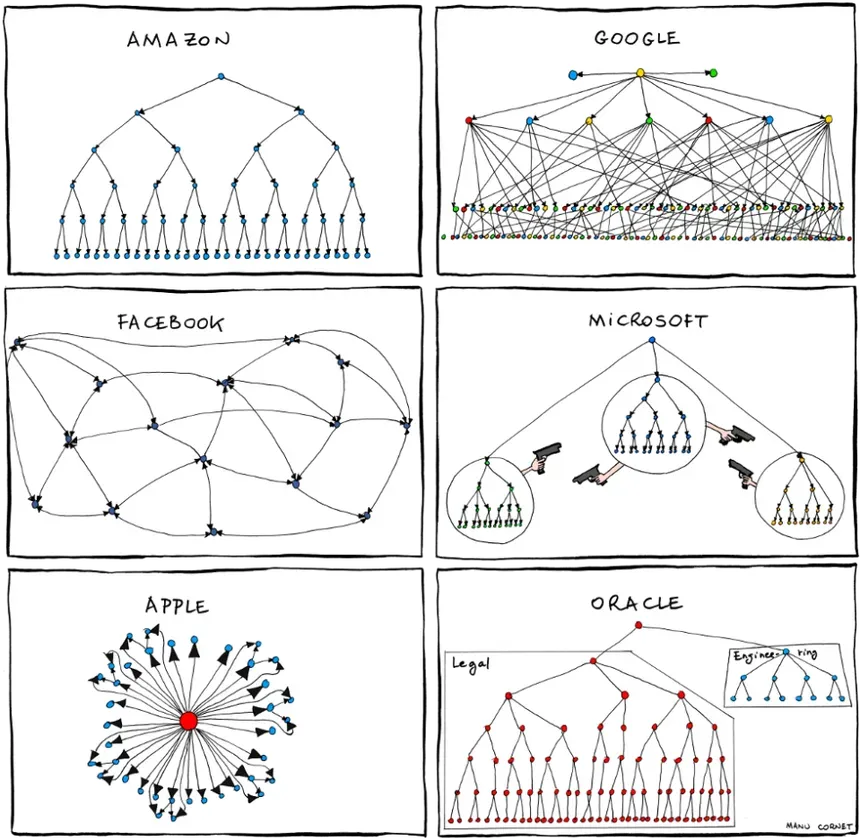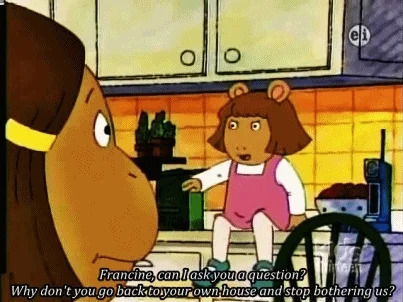Cryptid Team Structures
“Diagram for your life” –RuPaul*
A fellow design leader asked me, “How would you approach team structure?”
These types of questions always elicit, “It depends,” in my mind as I don't know who or what I'm working with.
Coincidentally, I recently finished reading Camille Fournier's The Manager's Path: A Guide for Tech Leaders Navigating Growth and Change.
In Theory
In the book, Fournier supplants the team structure topic by focusing on learning and transparency. She posits that team structure conversations are ultimately about teams identifying failure points, troubleshooting through them together, and improving upon them as an organizational learning process. If your organization is incapable of discussing its weaknesses and improving on them together then that is a red flag, for example.
In theory, I wholeheartedly agree with this. In practice, checking accountability within and across teams, up and down role ladders is another matter.
In Practice
As a designer, I like visualizing structures. I'm reminded of Manu Cornet's widely known diagrams (2011). The cartoon visualized the corporate giants' org charts. Keep in mind that these companies are 100s of 1000s of workers big, not to mention the contractors and part-timers that help fill in the blanks during full-timers' off or busy seasons.
It's awesome to see these visuals on a high level. It shows how much company values, performance reviews, communication styles, org or project divisions, and such can really vary within a few giant swarms.

Meanwhile, one of the top 5 viewed Config 2024 videos that wasn't from Figma was Nan Yu's tomato talk. Yu described witnessing team structure variations during his year of working with founders and startups. He commented on teams inadvertently lacking explainable intention around their org structures, bringing up Conway’s Law. Ultimately, the argument was to "set up an org chart that you want to ship," meaning:
- Map out the product's scope
- Decide on sizing based on customer wants, and
- Then, the overall team shape should look like the desired product
From this, Yu depicted his company's org chart as what he called “an asymmetrically shaped heirloom tomato”. Linear, his current company as of this writing, has about 100 associated LinkedIn members, and on a high level, the teams are split by region. Then a core product focus is sliced across both regions, accounting for over 50% of the org. Narrow groupings for mobile and web apps and infrastructure followed. The reporting lines indicate managerial relationships.

In Non-Humans
This brings me to share team structures amongst cryptids. For the purposes of this article, I'll focus on penguins, bees, piranhas, and lions.
| Group Size | Jobs & Strategies | |
|---|---|---|
| Stonecracker Penguins | 10s of 1000s - 2 million | Diurnal to nocturnal foraging occurs across the colony. Significant variation in hunting, dependent on surrounding predator-prey ratios. Cooperative hunting is not predictable. |
| Dwarf Honey Bees | 3,000 - 5,000 | Decentralized responsibilities. Queen lays eggs. Younger bees clean the hive, maintain. Older bees protect, forage, scout |
| Piranhas | 20 - 30 | Scavenge, hunt, swim in schools for protection, court. Males build nests, females lay eggs. Communication is done via sound and swim patterns. |
| Serengeti Lionesses | 4 - 8 | No queen, but prides are run by females who are the primary hunters. Their hunting process is both organized and unorganized, involving stealth and ambush modes with cool down periods |
I'm curious if anybody's visually mapped out animal team structures (maybe one day I can finish, process, and digest the Hunter x Hunter Chimera Ant arc into something useful for others). None of these animals are expected to explain themselves. Squirrels don't worry about their life purpose or direction. Humans in interviews have to though.
Circling back
The original question remains quite broad and vague.
I guess for starters, I'd focus on clear roles, direct communication, and organized collaboration in such a way that utilizes peoples' strengths and fosters innovation and team adaptability. How this all plays out, again, depends on who or what I'm working with. Where are the teams now and where do we want to go?
In any event, it takes time to get to know people and establish fit with a team like joining a new school. And at every school, humans can be a rainbow array of personalities.
